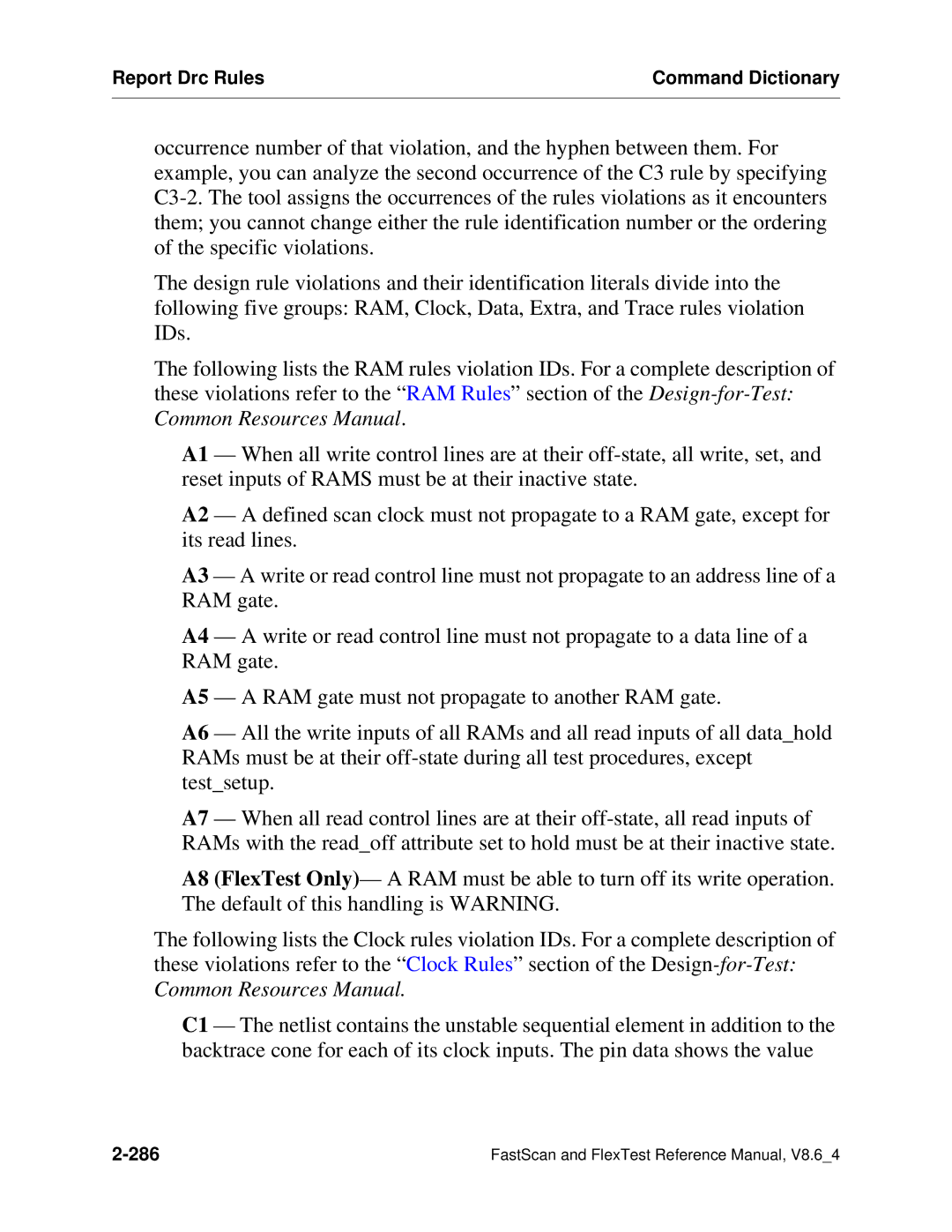Report Drc Rules | Command Dictionary |
|
|
occurrence number of that violation, and the hyphen between them. For example, you can analyze the second occurrence of the C3 rule by specifying
The design rule violations and their identification literals divide into the following five groups: RAM, Clock, Data, Extra, and Trace rules violation IDs.
The following lists the RAM rules violation IDs. For a complete description of these violations refer to the “ RAM Rules” section of the
A1 — When all write control lines are at their
A2 — A defined scan clock must not propagate to a RAM gate, except for its read lines.
A3 — A write or read control line must not propagate to an address line of a RAM gate.
A4 — A write or read control line must not propagate to a data line of a RAM gate.
A5 — A RAM gate must not propagate to another RAM gate.
A6 — All the write inputs of all RAMs and all read inputs of all data_hold RAMs must be at their
A7 — When all read control lines are at their
A8 (FlexTest Only)— A RAM must be able to turn off its write operation. The default of this handling is WARNING.
The following lists the Clock rules violation IDs. For a complete description of these violations refer to the “ Clock Rules” section of the Design
C1 — The netlist contains the unstable sequential element in addition to the backtrace cone for each of its clock inputs. The pin data shows the value
FastScan and FlexTest Reference Manual, V8.6_4 |
